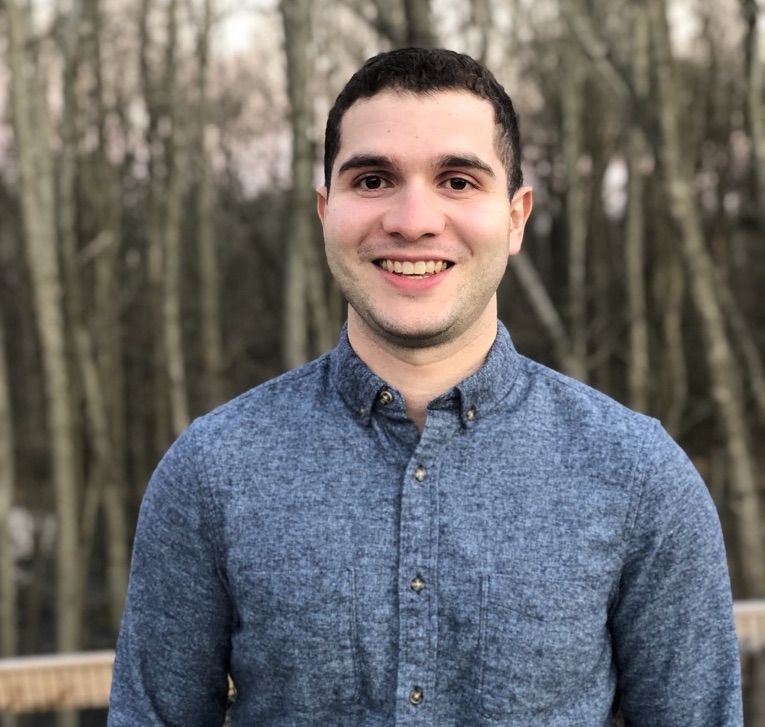Conversations with Clinicians: George Padin
George Padin, PT, DPT, ATC
Position: Physical Therapist
Current Physical Therapy Setting: Outpatient Orthopedics/Home Health
DPT Program Attended: Boston University
Today, we sit down with George Padin, PT, DPT, ATC, to discuss his path as a physical therapist and his advice for the next generation of PTs.

Why did you decide to become a physical therapist?
The environment is what pulled me in. When I first went to PT in 6th grade and then went to shadow later on in high school, I had a blast. The staff was just the right balance of funny, supportive, interesting, and motivating. It felt like I was a part of a sports team in a professional work setting. What more can you ask for? That type of culture is what made me go down the PT route and is what I sought out in my first job out of school.
What made you choose the physical therapy school that you ultimately attended?
The 6 year program. I was lucky enough at that time, there were a few schools still offering an ATC/DPT accelerated program. Once I got to my senior year, they terminated the combined program at Boston University. I got in at the right time. I also knew I wanted to be in a bigger city meeting people from all over the country and the world. I guess the common theme for me is surrounding myself with fun, supportive, and interesting people and the rest will follow.
What were the most challenging and rewarding parts of physical therapy school?
The most rewarding part of physical therapy school for me was being able to put it all together during clinicals. As a student, to help a patient feel better early on makes it all worth it. All those hours of draining didactic and lab work don’t seem as bad once you are able to safely and effectively progress patients along their POC [plan of care], and they actively look forward to receiving treatment from you.
I would say the most challenging part was cardiopulm….Okay that class was hard but the biggest challenge I would say was making the transition in thinking from just absorbing and reiterating didactic material to applying rationale and purpose behind the material I was learning. Once I was able to understand the “why” behind what was being taught in lecture and lab, things started to click. I had a wonderful CI [Clinical Instructor] who challenged my clinical reasoning early on and I will never forget the patient he called me out on for not taking the extra step to screen her low back. I felt so guilty for not doing my due diligence to provide her with the best and most efficient care possible. I never wanted to feel that again which pushed me to always seek out the bigger picture of what is truly going on with the patient in front of me. It took me some time to get to that point though.
How did you decide to work in the outpatient physical therapy setting and home health care?
I have always been drawn to the energy in an outpatient ortho clinic. In an ideal clinic, there is a healthy level of busyness amongst patients and staff that is stimulating, challenging, entertaining, supportive, and humbling. With the right balance of these clinic attributes, you learn a lot right off the bat, you get to help a lot of people, and you are surrounded by co-workers that can relate to what you are going through and put a smile on your face at any given point during the day. The energy in outpatient ortho is palpable. Find a clinic with that type of energy!
I eventually made the transition into home health for the flexibility in scheduling and standard work hours. I do miss the energy and my co-workers in outpatient ortho, but I do have the flexibility now to work on other side projects since most of my days are done by 5:30 the latest. Old people do not want you in their homes past 6!
Why did you decide to specialize in working with the CrossFit population? What’s your favorite aspect of working with this population?
If you are going to talk the talk, you gotta walk the walk with CrossFitters. I have always enjoyed seeing active individuals so naturally I wanted to start branching into the CrossFit population. It wasn’t until I joined a gym that gave me a massive appreciation for the sport. I was completely humbled by the complexity of Olympic lifting, the difficulty in aerobic workout programming, and the knowledge of the coaches. There was a whole new movement repertoire that I was motivated to learn and in my mind had to learn. I had always considered myself a movement professional but this was the first time in a while where I had to check my ego at the door and realize that there is much more to movement that physical therapy school doesn’t necessarily teach you. It’s been a great environment to be a part of.
CrossFit athletes are always pushing themselves to get better. They are motivated which usually means they are going to be proactive in their recovery compared to the average patient which makes my job that much easier.
What’s one thing you know now that you wish you had known as a physical therapy student?
Strategies to help manage the emotional and psychological impact of dealing with patients day in and day out. What we do as physical therapists is rewarding but hard work. I didn’t really know how to express it or to what extent it impacted me at first, but it eventually caught up to me. As a PT, you are taking all of your patients’ emotions and doing whatever you can to make them feel better. It’s inevitable that you will have their priorities ahead of yours. It’s never going to be perfect, but do your best to balance your own needs and the needs of your patients and loved ones. You really have to make sure you are helping and thinking of yourself in order to help others and respect your limits. I still struggle with this but I know how much better I feel when I prioritize this emotional balance.
What’s one piece of advice you would like to share with future physical therapists?
Keep it simple. Go back to the thing that drew you towards the profession initially. Whether it’s you like helping people, or the environment is cool, or maybe you just like the science side of things, do your best to find that driving force behind your interest. Once you have that driving force pinned down, ask yourself if it’s just exclusive to physical therapy or can you experience the exact same thing in a different environment? What makes physical therapy better suited to meet your driving force compared to other environments? The answer to those questions should help you find purpose and clarity in your professional journey.
Contact Us
Contact us today with any questions or for help with applying to PT school or excelling as a PT student!
